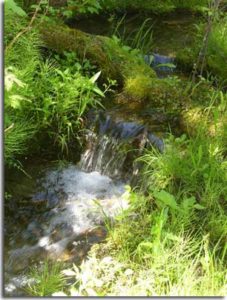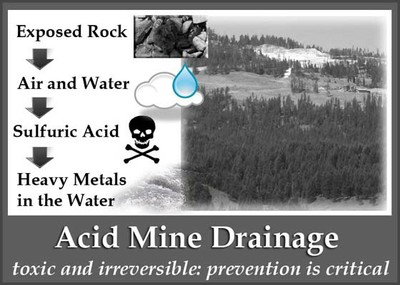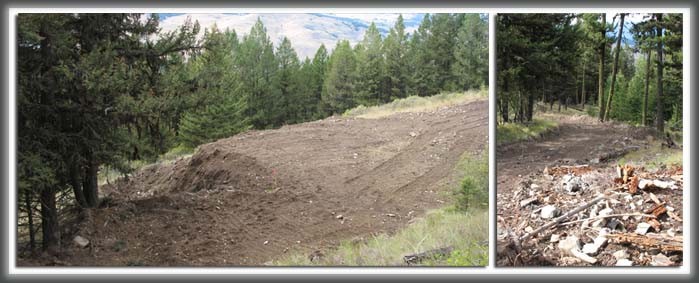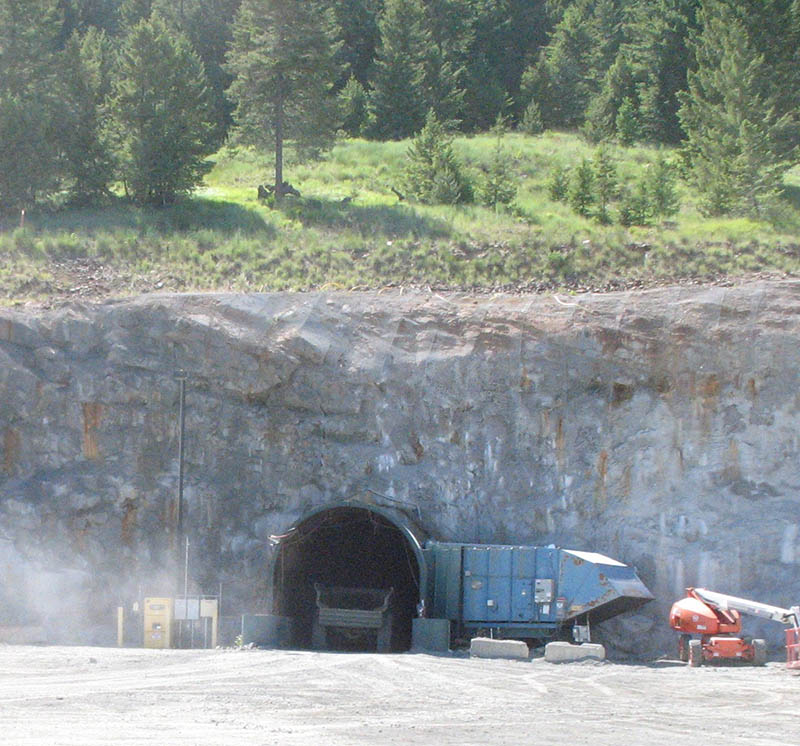Water Rights for the Mine
Background
Water Rights were historically OHA’s main vehicle for protecting surface water. Ecology took the position that since Washington State Water Law requires that water be put to beneficial use in order to get a water right, that if water is not being put to beneficial use, a water right is not required. This absurd interpretation of water law created a loophole that allowed Kinross to dewater Buckhorn Mountain and dump the water.
OHA’s Initial Concerns in the Mine’s Planning:
The dewatering of Buckhorn Mountain would be the most damaging aspects of the proposed mine. Ecology approved for Kinross to extract all the water from Buckhorn Mountain’s heart of gold. In order to mine, people, fish, and wildlife would be deprived of clean water. In some creeks, clean water would be replaced with treated water that is supposed to meet minimum standards. In other creeks, no replacement is planned. Mine shafts would change the way water flows from Buckhorn Mountain, affecting people dependent on that water. It would take 15-40 years to refill the aquifer inside Buckhorn Mountain. During that time, the creeks, springs, and seeps critical for healthy fish and wildlife would be deprived of water.
Water Rights for the Buckhorn Mine proposal approved by Ecology:
- G4-34904 (Mine Dewatering). This application approved November 21, 2007 for mining, industrial and flow augmentation for a maximum instantaneous beneficial use of 100 gpm with a total proposed annual withdrawal of 12.6 acre-feet per year, derived from groundwater associated with mine dewatering and operations. This water would be collected from sumps within the mine and from dewatering wells.
- G4-34905 (Domestic). This application approved October 25, 2007 for dust control, mining, and domestic use for site employees from a single well for a groundwater withdrawal with a proposed of 5 gpm and 5.2 acre-ft/yr.
- S4-34999 (Storm Water). This application approved October 24, 2007 for a surface water diversion for industrial and mining use to augment mine operational needs not met by the quantities requested under Application No. G4-34905, for 50 gallons per minute (gpm) (0.111 cfs). This water would come from collection of storm water drainage from ore and development rock stockpiles.
- R4-35093 (Reservoir). This application approved October 24, 2007 permits a storage facility (surge pond) for water derived from mine dewatering and storm water.
- CG-CCV1-4P200 (Newman). This change application, approved on September 26, 2006, changes the purpose, place, and time of use of a certificated seasonal irrigation water right for two groundwater wells to use in year-round dust control and seasonal mitigation of mining impacts on stream flows. The total certificated quantities for this right are 300 gpm and 200 acre-ft/yr.
- G4-35084 (Lost Creek Ranch). This application approved November 21, 2007 for instream flow mitigation for a maximum of 125 gpm from one well in the Myers Creek watershed.
- CS4-ADJ47P45 (Leslie Trust). This change application approved October 19, 2007 changes an existing water right from agricultural use to instream flow mitigation use during mining and during recovery of water levels associated with cessation of mine dewatering. for up to 0.156 cfs and 29.9 acre-ft/yr. Use would revert back to agricultural at the end of mitigation.
- CS4-ADJ47P36 (Thorp Trust). This change application approved October 19, 2007 is a permanent change in use from stock watering to instream flow mitigation for 3 gpm.
- CG3-29653P (K2 Mining). This change application, approved on September 28, 2006, changes the place of use from the K2 Mine to the proposed backfill borrow site in Ferry County. The total permitted quantities for this Water Right Permit are 50 gpm and 80 acre-ft/yr.
Problems with the water rights Ecology issued:
- There is an unreasonable level of uncertainty regarding the hydrogeologic modeling of the impacts of mine dewatering and the resulting streamflow depletion.
- Baseflow calculations of streamflows are questionable.
- Aquifer properties where stream flow reductions would take place are scarce. The modeling inputs are based on untested assumptions of aquifer behavior.
- Ecology fails to consider the cumulative impacts of granting Kinross water rights on local water supply and downstream water resources.
- Granting water rights to Kinross would be inconsistent with past actions by Ecology.
- The mitigation offered by Kinross does not come close to offsetting the harm to senior water right users and the public interest.
- The speculative nature of the mitigation proposed does not meet the requirements that new water rights not impair existing rights and that new rights not be detrimental to the public welfare.
- The mitigation offered by Kinross is off-site and out-of-kind, primarily enhancement of downstream wetlands and streams instead of a long-term commitment to on-site restoration.
- No reliable mitigation is being offered for stream depletion during the post-mining refilling of the Buckhorn aquifer.
- There is too much uncertainty that the mitigation plan would adequately protect existing rights and instream flows from harm.







